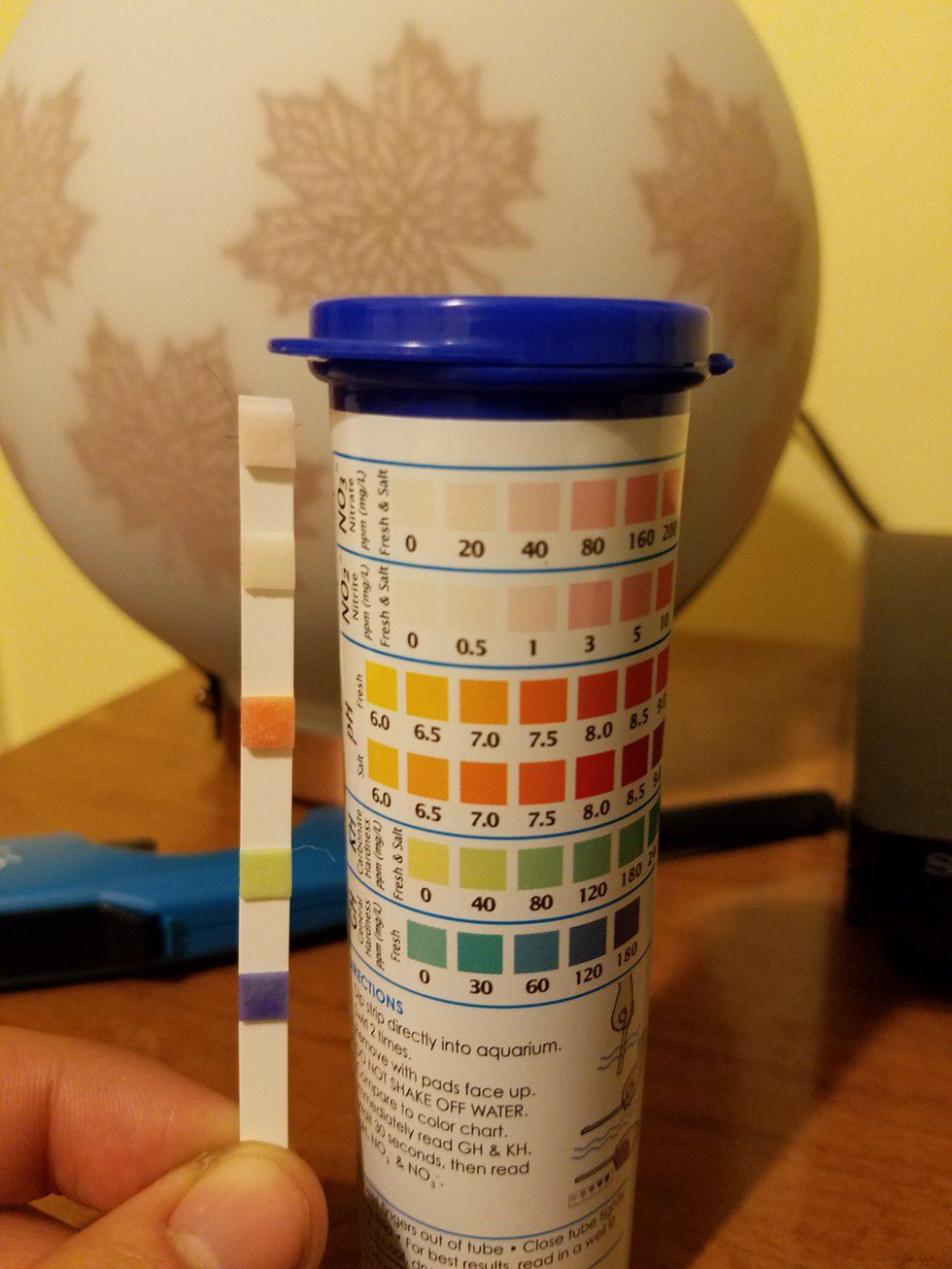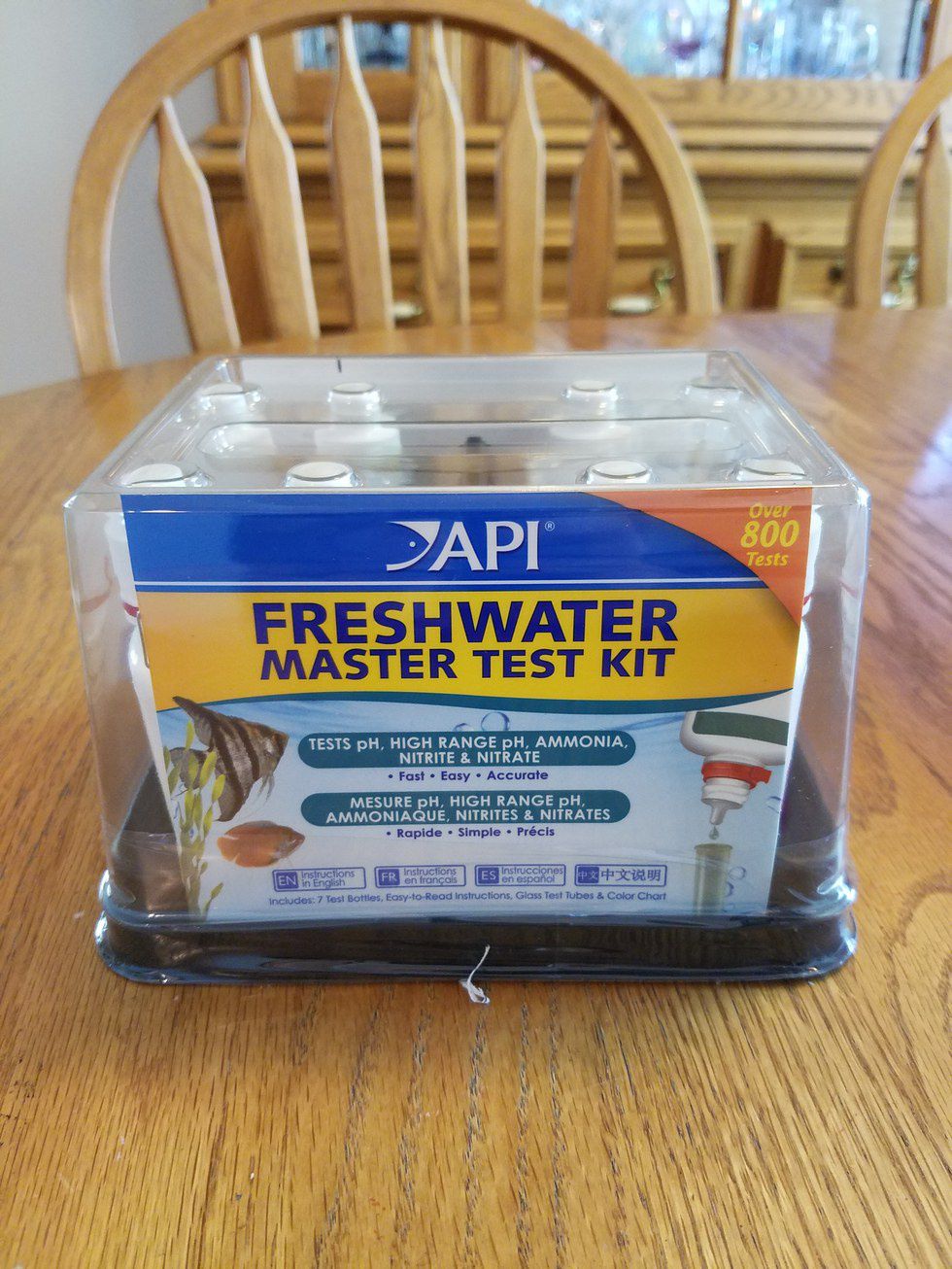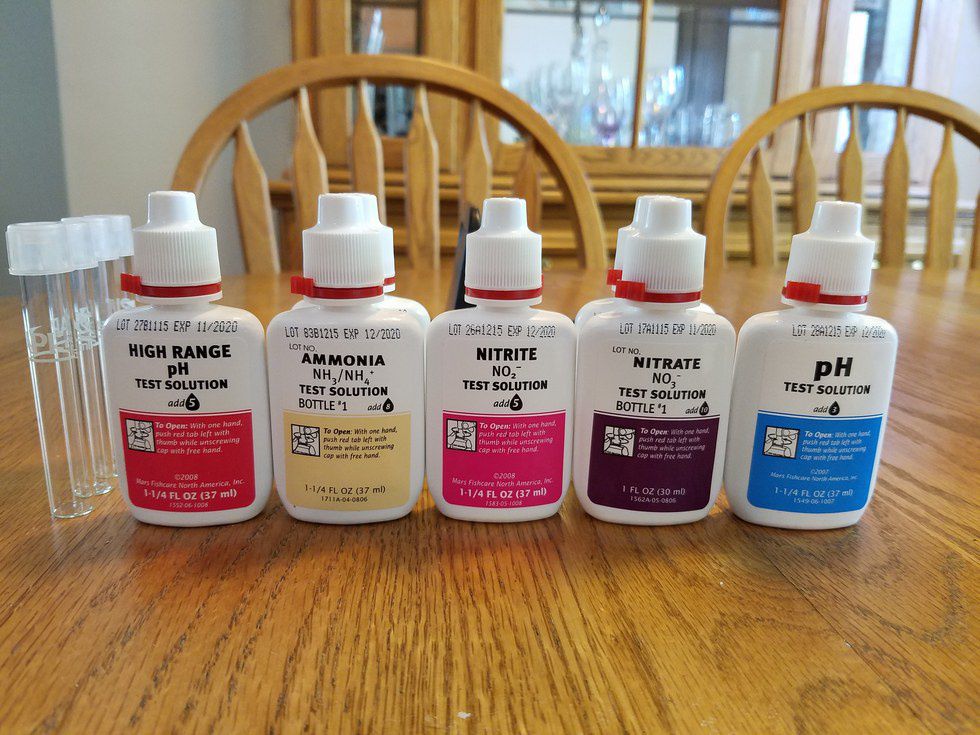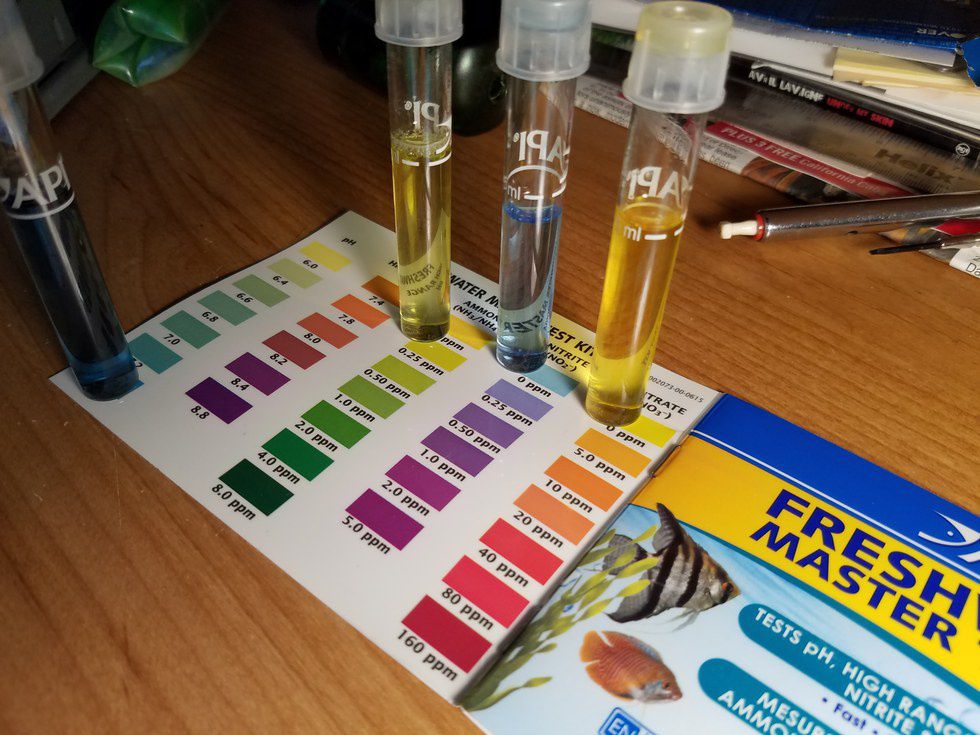For any fish hobbyist it is crucial to check the water parameters of an aquarium to ensure pristine water quality and the overall well-being of a fish. This often leads to two often asked questions: how do you check the water parameters and what should you be checking for?
From ammonia test kits to pH readers the various brands and testing methods might be overwhelming. The two most common ways to check water levels are five in one test strips and a master test kit.
Test Strips
Beginner fish hobbyists often buy test strips because of how easy they are to use as they simply require a dip in the fish tank for a couple of seconds. While useful for roughly checking water parameters it's somewhat difficult to tell exactly what the levels are and accuracy can fluctuate.
Once a test strip container is opened moisture from the surrounding area will begin to alter the results, making them inaccurate. Test strips are initially cheaper than a master kit, but while they check for nitrites, nitrates, the pH level of the water, carbonate and the general hardness of the water it's missing an essential component: ammonia readings.
For the 5 in 1 test strips a 25 count container costs around $9. To buy a container of 25 ammonia test strips costs around $12. The cost is about 80 cents per strip, making it more expensive over time compared to buying a master test kit.
Master Test Kit
Master Test Kits come in containers that look like the beginning to a basic chemistry lab, but they are quite easy to use after a few tests. The API Freshwater Master Test Kit comes with four vials that hold around 10ml of water and an assortment of solutions that test for pH, high range of pH, ammonia, nitrite and nitrate levels.
Master Test Kits are much more accurate than their test strip counterparts and cost a lot less in the long term. The API Freshwater Master Test Kit costs around $27 and if a conservative estimate is used when calculating the number of tests per kit the cost per use averages 30 cents. There is an expiration date of around 3-4 years on the solutions included in the test kit, although this shouldn't be a problem even if a test kit is used sparingly.
How To Use
An instruction booklet is included in the API Freshwater Master Test Kit and is easy to interpret. Each vial has a line that measures 5ml of water to be tested as well as solutions that measure pH, ammonia, nitrites, and nitrates.
For pH add three drops from the test solution (which conveniently comes in a container with a dropper). Adding five drops in a separate vial will display the correct pH level in the tank if the pH level is higher than 7.6.
The API Freshwater Master Test Kit comes with two bottles of ammonia test solution, so adding eight drops from bottle #1 and eight drops from bottle #2 (while shaking the vial for a few seconds in between) will display the correct levels of ammonia in the tank.
To test for nitrite levels adding 10 drops of solution and shaking the vial for a few seconds is all that's needed to check for nitrite in a tank.
The biggest complication in the API Freshwater Master Test Kit is the nitrate test, which involves two bottles of solution. Adding 10 drops from bottle #1 is all that is needed, but it is crucial to vigorously shake bottle #2 for at least 30 seconds to ensure accuracy of the results. One of the ingredients "wants to solidify out of a liquid solution" if the test bottle sits for any period of time, giving a falsely low reading for nitrates if it isn't mixed up.
Because of the fluctuation in the number of drops needed for each test certain solutions will run out faster than others. Listed below are the individual test kits for each solution:
API High Range pH 160 Count Test Kit: $7
API Ammonia 130 Count Test Kit: $7
API Nitrite 180 Count Test Kit: $10
API Nitrate 90 Count Test Kit: $12
Once all of the solutions have been added and the vials shaken it will take at least five minutes for the test results to show up. Each vial will show a different color for the test readings, which are then compared to a color pallet that the test kit comes with showing what each level is at.
As a general rule ammonia and nitrite readings should be as close to 0 ppm as possible, while nitrates should be below 40 ppm.
Winner: Master Test Kit
Five in one test strips may seem tempting, but because the results are harder to interpret the tests can be rather inaccurate and the price is generally higher. Purchasing a master test kit is worth the investment despite the initial cost. The readings are much more accurate, ensuring happy fish, a healthier fish tank and an even happier wallet.






















